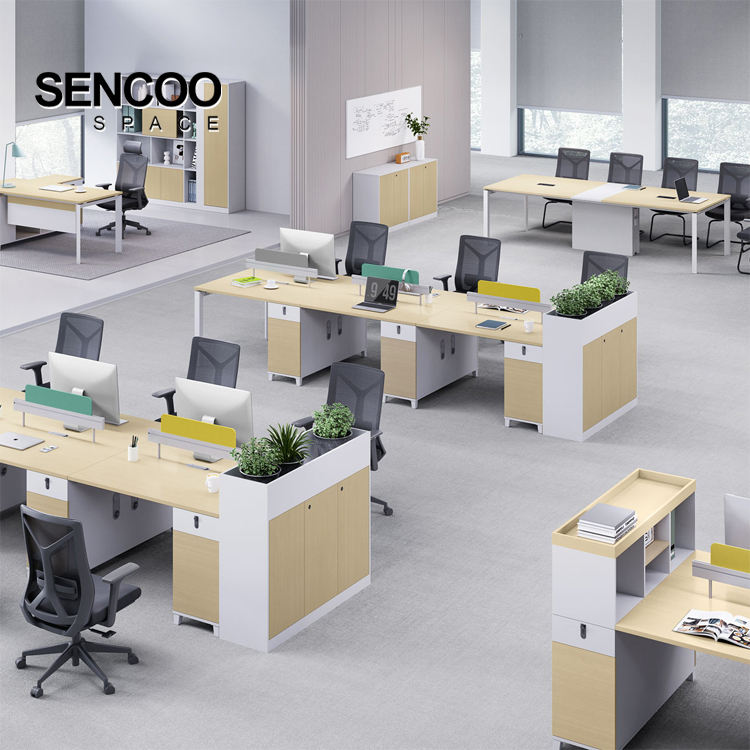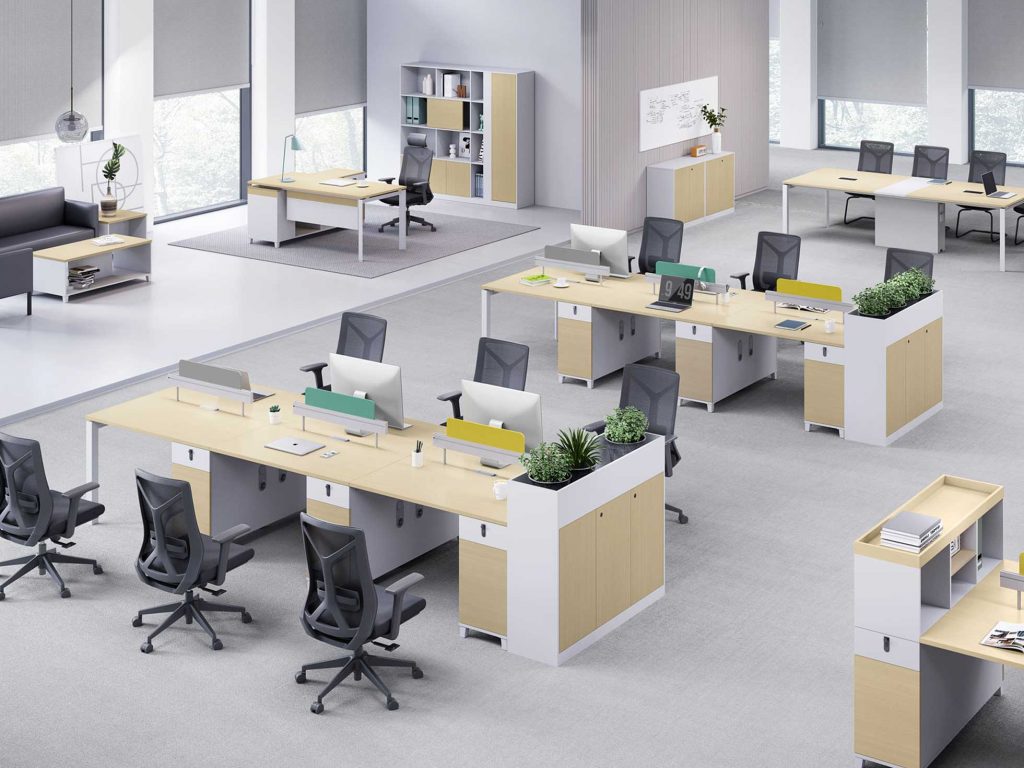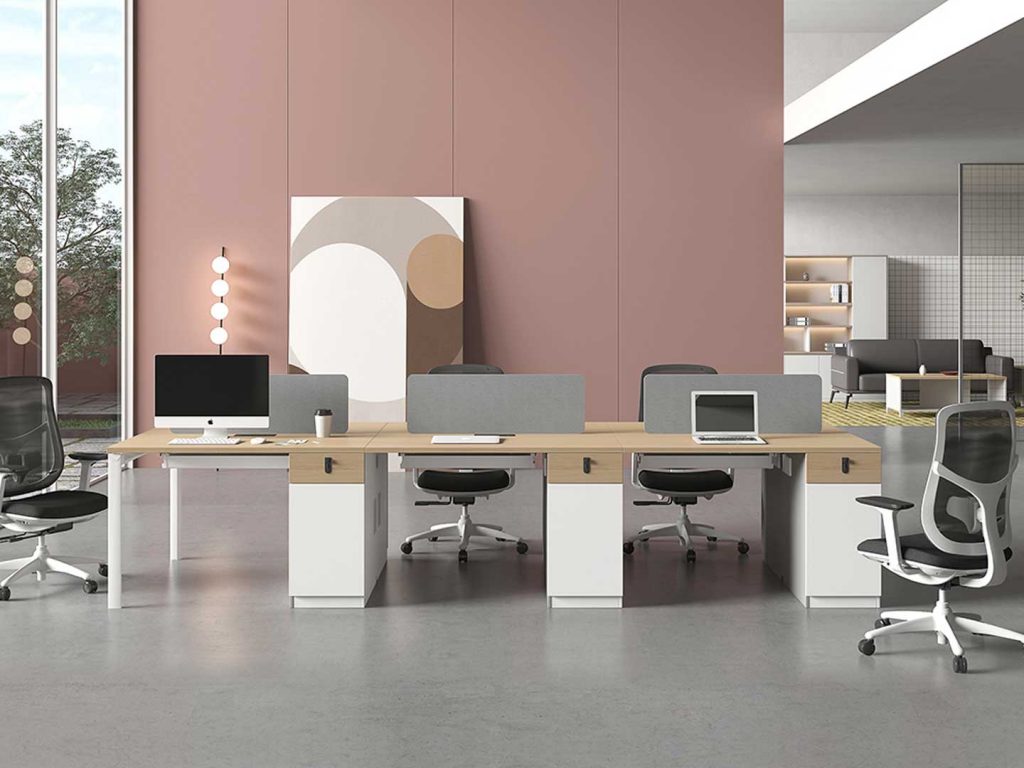Modular office workstations have become a popular choice in modern office design due to their flexibility and practicality. How to scientifically arrange modular office workstations to maximize space utilization, meet employee needs, and reflect corporate culture has become a key concern for many companies.
Modular office workstations can be customized based on spatial requirements, team size, and work styles. Below are key points and recommendations for configuring modular office workstations:

1. Design Workstation Layout Based on Space
(1)Open Layout:
Ideal for team collaboration. Consider using linear or cluster-style workstations to facilitate communication among employees.
(2)Partitioned Layout:
Suitable for environments that require privacy or focus.
(3)Hybrid Layout:
Combines open and private spaces, making it ideal for multifunctional office areas.
2. Choose the Right Modular Desk
(1)L-shaped Workstation:
Best for employees who need multi-screen setups or larger work areas.
(2)Linear Workstation:
Perfect for open team collaboration spaces.
(3)Standing Workstation:
Ideal for promoting healthy work habits.
3. Functional Module Combinations
(1)Storage Modules:
Include under-desk storage drawers, mobile file cabinets, or desktop organizers to keep the workspace tidy.
(2)Partition Modules:
Use detachable dividers or mobile screens to provide privacy while maintaining layout flexibility.
(3)Cable Management Modules:
Incorporate hidden cable trays or multifunctional power outlets to reduce clutter.
(4)Collaboration Modules:
Add shared whiteboards, document display stands, or small discussion tables to enhance team communication.
4. Ergonomic Accessories
(1)Ergonomic Chair:
Pair with adjustable backrests, height, and armrests to ensure comfort during long work hours.
(2)Monitor Stand:
Use adjustable monitor arms to optimize viewing height and protect neck health.
(3)Keyboard Tray:
Add a keyboard tray to reduce wrist strain.
5. Consider Color and Material Coordination
(1)Unified Color Scheme:
Opt for neutral tones like light gray, white, or natural wood to create a professional and cohesive look.
(2)Material Pairing:
Wood: Adds a natural and warm touch.
Metal: Reflects modernity and durability.
Glass or Acrylic: Enhances lightness, suitable for upscale office areas.
6. Focus on Expandability
Modular workstations should allow for easy expansion and reconfiguration:
(1)Mobile Modules:
Choose storage cabinets or desks with wheels for easy movement and adjustment.
(2)Flexible Combinations:
Ensure modular desks can be freely combined to accommodate changes in team size.
The arrangement of modular office workstations is not just about space utilization but also about employee productivity and the embodiment of corporate culture. Through layout design, functional optimization, and unified styling, you can create an office environment that is both efficient and comfortable.

